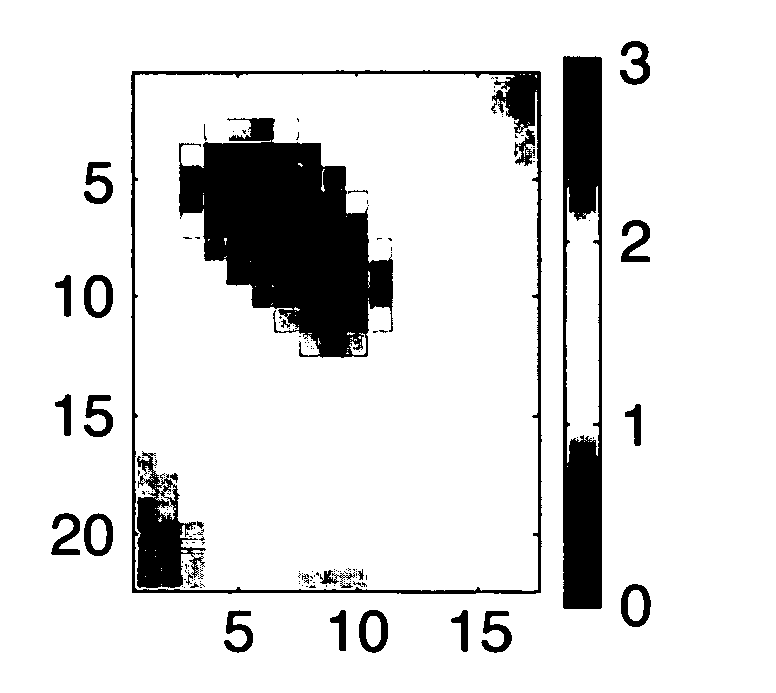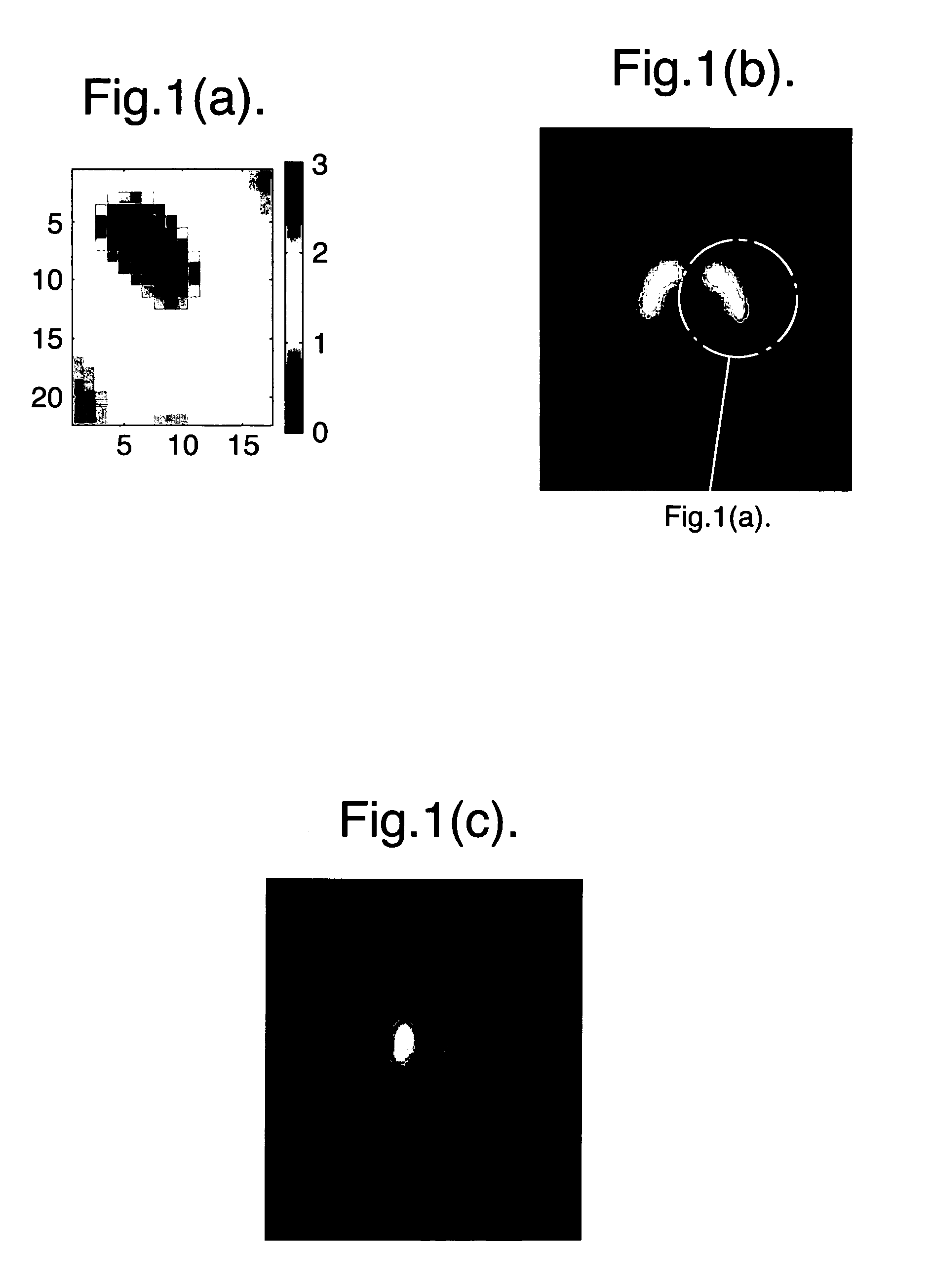Characterisation of progressive system dysfunction
a progressive system and dysfunction technology, applied in the field of characterisation, can solve the problems of difficult to characterise the dysfunction in a consistent and quantitative way, and the non-biological system, such as mechanical, electrical or electronic systems, is also subject to gradual deterioration, and it is difficult to achieve consistent and quantitative characterisation
- Summary
- Abstract
- Description
- Claims
- Application Information
AI Technical Summary
Benefits of technology
Problems solved by technology
Method used
Image
Examples
Embodiment Construction
[0043] An example of the invention will now be described with reference to characterising the progression of Parkinson's disease from SPECT scans of the striata as described above.
[0044] In broad terms this embodiment consists of the following three steps:—
[0045] 1) Compute a single score, for example a number between 0 and 1, indicating the health of each individual structure (the Heath Measure) of, in this example, the left and right striata.
[0046] 2) Use the two health measures to compute a further score, for example a percentage, representing the progression of the disease, where 0% is healthy and 100% is extremely degenerated (this may be termed the Disease Progression Percentage).
[0047] 3) Compute confidence intervals indicating how confident the algorithm is in the estimation.
[0048] Thus in the case of charactering Parkinson's disease a health measure is first computed for each striatum. The values of the health measure range from 1 to 0 where 1 indicates a healthy striat...
PUM
| Property | Measurement | Unit |
|---|---|---|
| dimension | aaaaa | aaaaa |
| distance | aaaaa | aaaaa |
| trajectory | aaaaa | aaaaa |
Abstract
Description
Claims
Application Information
 Login to View More
Login to View More - R&D
- Intellectual Property
- Life Sciences
- Materials
- Tech Scout
- Unparalleled Data Quality
- Higher Quality Content
- 60% Fewer Hallucinations
Browse by: Latest US Patents, China's latest patents, Technical Efficacy Thesaurus, Application Domain, Technology Topic, Popular Technical Reports.
© 2025 PatSnap. All rights reserved.Legal|Privacy policy|Modern Slavery Act Transparency Statement|Sitemap|About US| Contact US: help@patsnap.com



